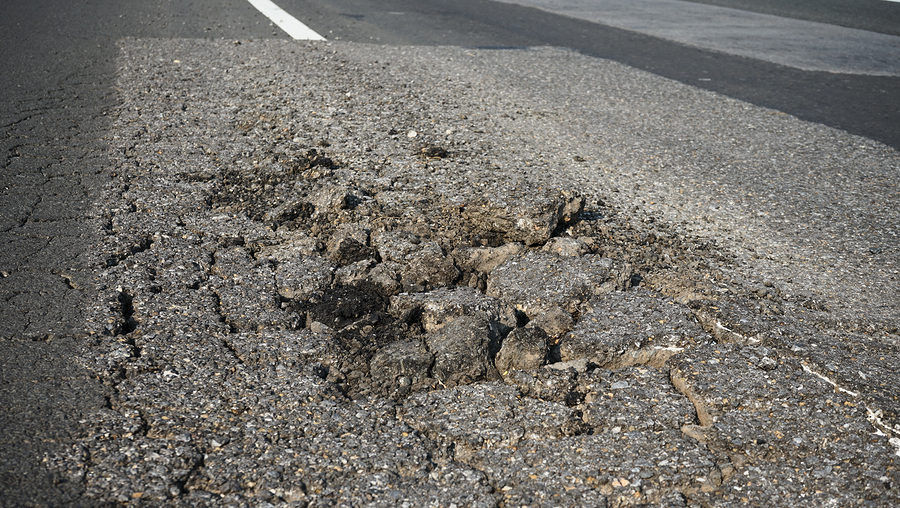When water freezes within the pores of pavement, the ground underneath expands, causing the pavement to rise. Once the water thaws, the ground goes back to normal but the pavement it still elevated. Naturally, this creates stability issues that eventually lead to cracked pavement and potholes. So long as our planet continues to experience weather, we can expect to have a need for viable pavement repair. Fortunately, innovative advancements are being made every day in the pavement industry, especially when it comes to potholes.
Continue reading to explore some of the modern technologies used to repair asphalt potholes, and perhaps better understand the importance of pothole repair and roadway maintenance for your commercial complex.

Conventional Pothole Repair Methods
There are various types of pothole repair methods used in the pavement construction industry, both semi-permanent and temporary versions. One of the most popular techniques used to repair potholes is the “throw and roll” method. This is a temporary fix that basically involves patching the hole with the right material, and then letting traffic drive over it to finish the job. This is the quickest and easiest technique for repairing a pothole on a short-term basis.
In fact, it can cause even more water accumulation and stability issues if used as a permanent solution. This is because the pothole is only being filled-in from the top; which means the rocks and pebbles still inside creating gaps beneath the surface where water can occupy. To make the “throw and roll” repair method semi-permanent, these chunks of rock and pavement need to be removed before the hole is filled with patching material.
Infrared Pothole Repair
For an even more permanent solution, many pavers are turning to a new pothole repair technique called infrared heat technology. In this method, a heat panel is used to melt a pothole enough to soften it slightly. This allows all the crumbled and broken asphalt in and around the pothole to be converted into a reusable material. The softened asphalt leftovers are raked-in and smoothed out until it is thoroughly conformed to the repaired asphalt and the existing surrounding asphalt. This creates a strong, thermal bond between both pavements.
Another great operational advantage is the lack for excavation. No jack-hammering, digging, or milling is necessary when using this technology, so no underground systems are disrupted. This includes telephone lines, plumbing, and more. No matter how large or small the patch in the pavement is, it can be repaired with infrared technology, and all at once in a continuous route so to not block off large portions of the road or highway.
Infrared technology has a few note-worthy economic benefits too. For one, it primarily uses existing asphalt, so very little new material is needed, reducing material purchasing costs by 80 percent or more. Also, for this same reason, very little material is discarded, which reduces disposal costs by 90 percent. Costs for transporting and plant production, as well as, the cost for city highway and road repairs are reduced dramatically.
Indiana Asphalt Pavement Professionals
Call ACI Asphalt and Concrete at 317-549-1833 for licensed, bonded, and insured asphalt paving services in Indianapolis, Indiana. We offer a wide range of paving services for commercial and industrial properties, at the most competitive prices in town, including inspections, installation, replacement, repair, and more. Request a free quote, today.

